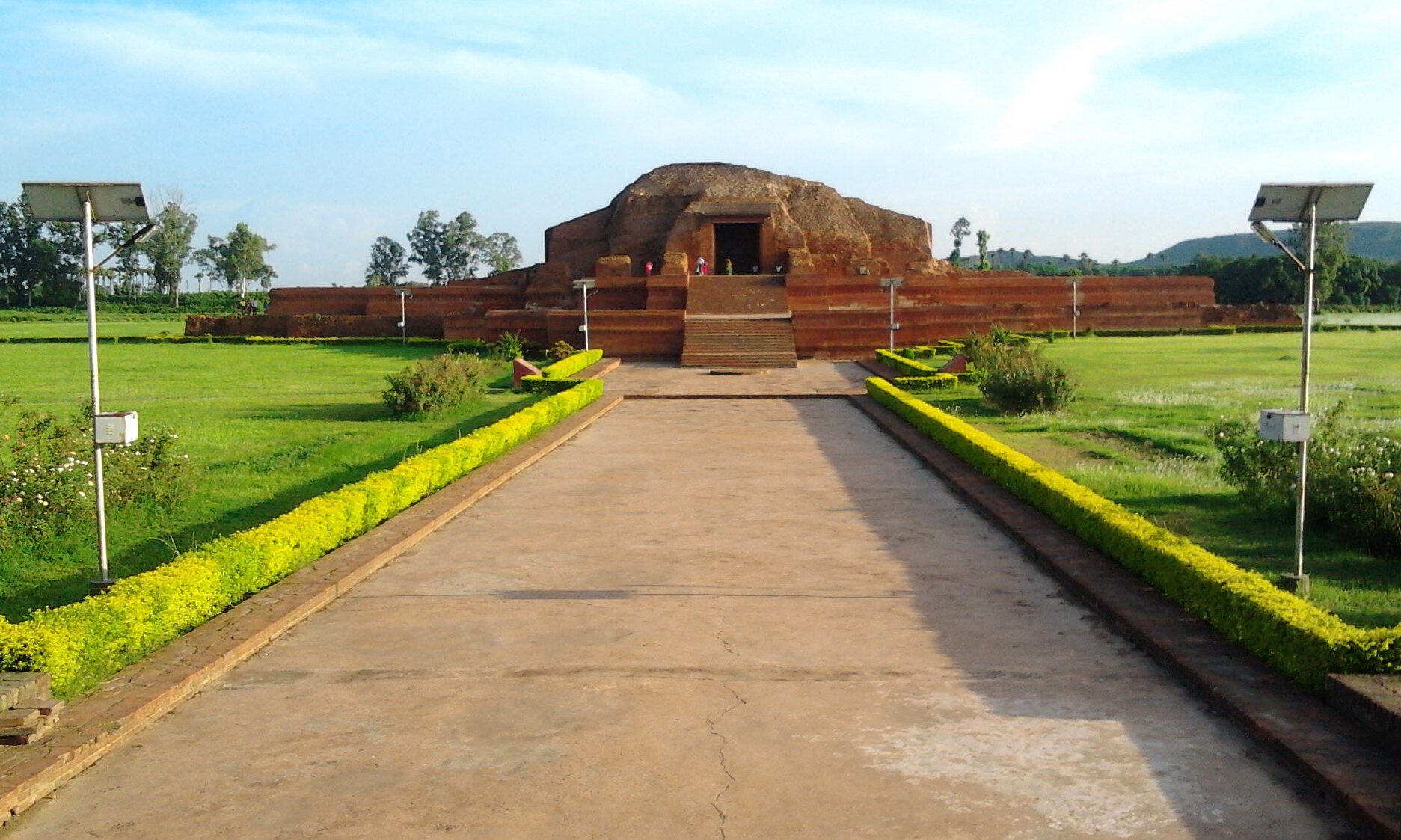
Situated at the confluence of three rivers near Godda-Pakur main road, eight km away from the water headquarters, Singhwahini Dham is the center of faith.
Singhvahini Dham is situated at the confluence of Kajhia and Jatjori river near Jamni village. One has to cross a river to get there. This place is important from historical point of view.
There is an influx of devotees and devotees throughout the year. The people of this region start the new year with worship in the court of Maa Singhvahini.
History
In ancient times., on the banks of the river, there was strong hold of Maheshpur kingdom, ruled by King Padmasena. At some distance from there, a golden statue of Maa Singhwahini was installed at a very beautiful place in the deserted wilderness, where the king used to worship. At some distance from there, sage Jaimini used to offer worship in the hut of clumps. Maa Singhvahini was worshiped as the family deity of the royal family. This Dham is situated at the confluence of Jatajori, Kajhiya and Harna rivers.
Once flood ruined everything, only the golden statue remained. It is said that due to severe flood there was great destruction in this area and after this the king shifted his capital from this place to Maheshpur. The golden statue of Maa Singhvahini was brought to the tapobhoomi of the ascetic sage Jaimini. Nevertheless, the remains remained there, which was worshiped by the devotees. In the same period in 1941, a devotee Karamchand Panjiara got a temple built.
After that, it continued to develop progressively with public cooperation.

Even today in Singh Vahini place, worship of Maa Durga is done from Pidi. Singh Vahini place is world famous as Shaktipeeth. Earlier Maa Singh Vahini Mandir Haveli was under Raja Gopal Prasad Singh of Kharagpur. Later it was bought by Raja Kritanand Singh of Baneli State at a cost of Rs.8000. When the zamindari system started coming to an end, the king took the gold idol of his Kuldevi with him to Maheshpur in Pakur district.
According to a legend, the idol of the mother was being taken to Pakur by placing it on an elephant. The elephant was unable to walk with the statue. Later the king had a dream and where the elephant set foot, the goat was sacrificed. It is said that Bali died near the village of Belbathan. After that sacrifices were started at a distance of one kos. Then the statue of Maa Singh Vahini was moved to Maheshpur state of Pakur district. About 30 years ago, the idol of the mother was also stolen from there.
Why is the worship of Pindi:
It is said that when the idol of the mother was taken from here. Then the then Pandit here gave up food and water. After that the mother gave a dream to the pandit that you worship here by installing a pindi instead of a statue. The fruit that was available earlier, will continue to be received. Since then, the tradition of worshiping from Pindi in Maa Singh Vahini temple started, which continues even today. Vaidya and Panjiara family built the temple: After the end of the Zamindari system, this place was bought by Chamru Ghatwar of the village itself. Later the temple was built by Vaidya and Panjwara family. Even today, the first worship of the mother is done by her descendants.
How to Reach
By Air :
Ranchi Airport is the nearest airport to Godda at a distance of about 364 Km. Deoghar Airport also has become operational.
By Train :
Godda is well connected with road and rail link. The Godda railway station is situated around 4 km from city center. Trains can also be taken in Bhagalpur, from where Godda can be easily reached.

By Road:
The national highway NH-133 pass through Godda. Godda is well connected by a road network and national Highway. The tourist can reach to Godda by taxi. The normal Indian taxi charges of Rupees 8 to 20 will be charged for each



















